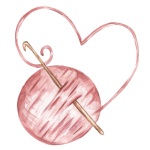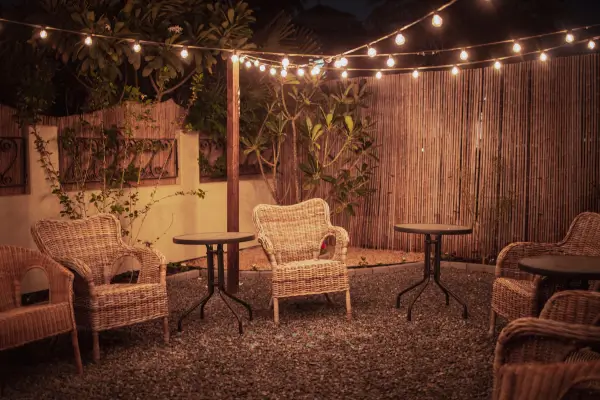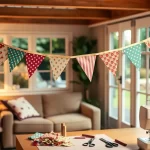Replacing plastic wrap with reusable fabric bowl covers is a simple yet impactful change. These covers help reduce waste and promote sustainability in your daily life.
Fabric bowl covers are versatile and stylish. You can use them to store leftovers, cover bowls during meals, or even gift homemade treats. They’re both practical and eco-friendly.
Unlike plastic wrap, fabric covers are reusable and washable. This makes them a cost-effective solution for your kitchen needs. Plus, they add a personal touch to your home.
This guide will teach you how to make your own fabric bowl covers. With basic sewing skills and a few materials, you’ll create something beautiful and functional.
Let’s get started. By the end of this project, you’ll have a set of handmade covers ready to use. It’s a small step toward a greener lifestyle.
Why Choose Fabric Bowl Covers?
Plastic wrap contributes to environmental pollution. It’s often used once and then discarded, ending up in landfills or oceans. Fabric bowl covers, on the other hand, are reusable and reduce waste significantly.
Another advantage is their versatility. You can use them to cover bowls of different sizes, store food in the fridge, or even transport snacks. They’re also machine washable, making cleanup a breeze.
For beginners, this project is ideal. It uses simple techniques and requires minimal tools. Plus, it’s a great way to practice sewing while creating something useful for your home.
Materials You’ll Need
Choosing the right materials ensures your fabric bowl covers are both functional and durable. Here’s what you’ll need:
- Fabric : Medium-weight cotton works best. It’s breathable and holds its shape well. For a standard set, you’ll need fabric pieces sized 12”, 14”, and 16” in diameter (to fit small, medium, and large bowls).
- Elastic : Use thin elastic (¼ inch wide) for a snug fit. Each cover will require a length of elastic slightly smaller than the fabric’s circumference (e.g., 30” for a 12” cover).
- Thread : Polyester thread is strong and durable. Match the color to your fabric or choose a contrasting shade for a decorative touch.
- Scissors or rotary cutter : Sharp scissors ensure clean cuts. A rotary cutter with a cutting mat is even better for precision.
Double-check your measurements before cutting. Having extra fabric and elastic is helpful in case of mistakes or adjustments.
Tools You’ll Need
Having the right tools makes sewing easier. Here’s a detailed list:
- Sewing machine : A basic model works fine. If you don’t have one, hand-sewing is an option, though it takes longer.
- Needles : Universal needles (size 80/12) are suitable for medium-weight fabric.
- Pins : Straight pins hold fabric pieces together while sewing.
- Measuring tape or ruler : Accurate measurements ensure your covers fit perfectly.
- Safety pin : Useful for threading elastic through the fabric channel.
- Iron : Pressing seams creates a polished finish.
If you’re borrowing or renting tools, make sure they’re in good condition. Proper preparation saves time and frustration.
Step 1: Cutting the Fabric
Start by cutting circular pieces of fabric. Use a compass or trace around bowls to create perfect circles. Cut three sizes: 12”, 14”, and 16” in diameter.
If your fabric has a pattern, pay attention to alignment. Pin the layers together to prevent shifting while cutting. Smooth edges make sewing easier.
After cutting, press the fabric with an iron. This removes wrinkles and ensures accuracy during assembly.
Step 2: Sewing the Edge
Fold the edge of the fabric circle inward by ¼ inch, then fold it again by another ¼ inch to create a double-fold hem. Press with an iron to hold the folds in place.
Pin the folded edge all the way around the circle. Using a sewing machine, stitch close to the inner edge of the hem. This creates a channel for the elastic.
Remove the pins as you sew. Take your time to ensure the stitching is even and secure.
Step 3: Adding the Elastic
Cut a piece of elastic slightly smaller than the fabric’s circumference. For example, use 30” of elastic for a 12” cover. Attach a safety pin to one end of the elastic.
Thread the elastic through the channel you created in Step 2. Use the safety pin to guide it through. Be careful not to let the other end slip into the channel.
Once the elastic is threaded, overlap the ends by ½ inch and sew them together securely. Stretch the elastic gently to ensure it’s evenly distributed in the channel.
Step 4: Finishing Touches
Inspect the entire cover for loose threads or uneven stitches. Trim any imperfections and press the cover again with an iron for a polished look.
Test the cover on a bowl to ensure it fits snugly. Adjust the elastic if necessary by resewing the ends. The cover should stretch easily over the bowl and stay in place.
Repeat the process for the remaining sizes. You’ll end up with a set of three covers that fit a variety of bowls.
Step 5: Customizing Your Covers
Consider adding decorative elements like embroidery, fabric paint, or appliqué. These details personalize your covers and make them uniquely yours.
You can also experiment with different fabric patterns. Floral prints are great for spring, while plaid or solid colors suit a cozy winter vibe.
Label each cover with its size using fabric markers or stitched labels. This makes it easy to grab the right one when you’re in a hurry.
Ready to Start Sewing?
Now that you know how to replace plastic wrap with reusable fabric bowl covers, it’s time to take action. Gather your materials and set aside some time to create something meaningful.
Imagine the satisfaction of using your handmade covers every day. Not only will you reduce waste, but you’ll also inspire others to adopt sustainable habits.
Don’t wait—start today. Your contribution to a greener world begins with this simple project. Happy sewing!



